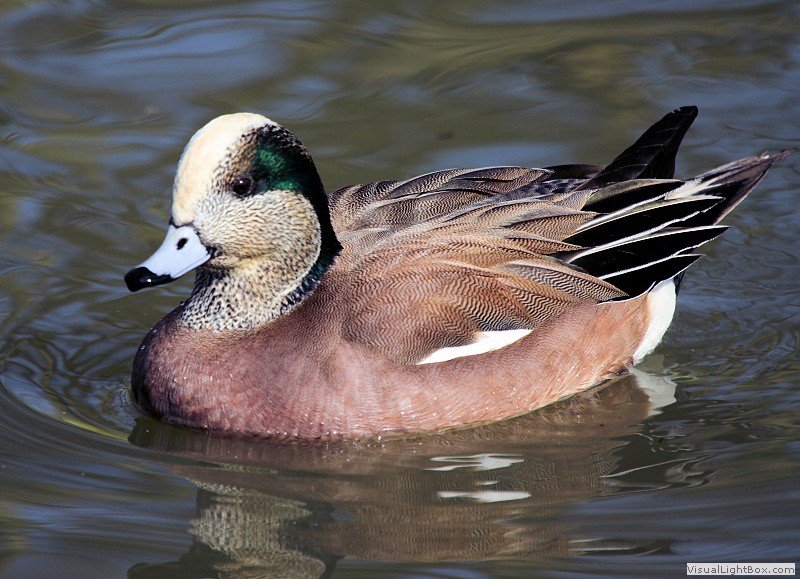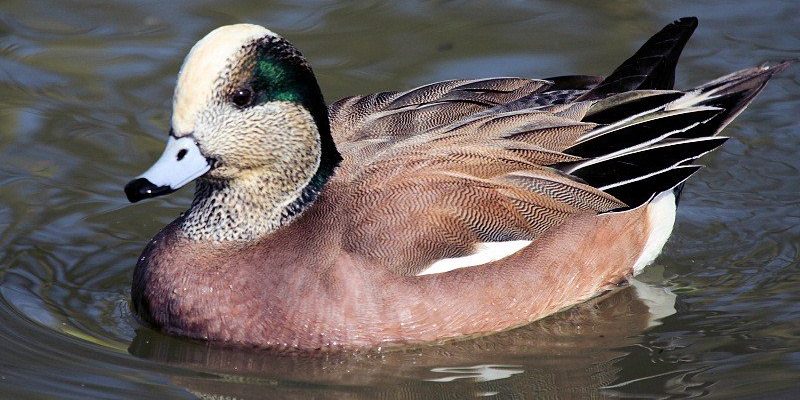
So, how do you go about recognizing these charming waterfowl? You might think it boils down to just looking for a quack and a paddling motion. But trust me, there’s so much more to it! Ducks come in all sizes, colors, and patterns. Each species has its unique traits, habits, and habitats. Let’s explore how to spot these feathered friends and get you equipped with the knowledge to enjoy birdwatching like a pro.
Understanding Duck Anatomy
To identify a duck, it helps to know a bit about their anatomy. Ducks sport a variety of physical traits, and these can be your best clues. First off, think about the size of the duck. Most domestic ducks, like the ones you might see at a park, are quite larger than their wild relatives. Wild ducks can vary quite a bit; for instance, the Mallard is medium-sized with a distinct green head for males, while the tiny Bufflehead is much smaller and features a striking white patch on its head.
Next, let’s consider coloration and markings. Male ducks, or drakes, often have brighter colors to attract mates and differentiate themselves from females, which are generally more camouflaged. For example, a male Wood Duck flaunts iridescent feathers, while the female is more subdued in browns and grays, perfect for blending in with her surroundings. If you can remember to look for those gender-specific traits, you’ll find identifying ducks a bit easier.
Don’t forget about their bills and feet! Ducks have broad, flat bills that are perfect for their feeding habits. By observing the shape and color of a duck’s bill, you can glean information about their diet. Dabbling ducks like the Northern Pintail have long, slender bills for sifting through water, while diving ducks such as the Common Eider have stout, thick bills for deep dives. The feet—often webbed—help with their swimming ability, so keep an eye out for their movements, too.
Habitat Awareness
Where you find ducks is just as important as how they look. Ducks can be quite picky about where they live. Knowing their preferred habitats can narrow down your search significantly. Generally, ducks are found near freshwater lakes, rivers, and wetlands. Some species prefer ponds surrounded by reeds, while others thrive in open bodies of water.
Think about the season you’re out and about, too. Many ducks migrate, so their presence can vary by the time of year. For example, during the fall and winter, you might find a variety of species that travel south to escape the cold. If you’re trying to identify a duck in the spring, think about breeding plumage; males often get even flashier as they prepare for mating season.
If you’re at a park or nature reserve, pay attention to the local vegetation. Ducks often look for places to nest that provide cover from predators, so areas with tall grass, bushes, or reeds are prime spots. Understanding where ducks like to hang out can significantly improve your chances of spotting them.
Listening for Duck Sounds
Honestly, one of the most fun aspects of identifying ducks is listening for their sounds. Ducks can be quite vocal! You might be familiar with the classic “quack,” but that’s not the end of the story. Different species have unique calls—a drake’s call can sound completely different from a hen’s!
Take the Wood Duck for example. Their high-pitched, whistling sounds are distinct, and they sound quite different from the well-known quack of a Mallard. Learning to recognize these calls not only heightens your awareness but also gives you insight into the behaviors of these ducks. For instance, low grunting sounds often indicate a duck is feeling threatened.
In some species, sounds also serve critical purposes like communication during breeding season or signaling alarm. If you’re out hiking or birdwatching, take a moment to pause and listen. You might hear a duck beckoning for a mate or warning others of nearby danger. It’s like receiving a little insight into their social lives!
Using Field Guides for Identification
When it comes to identifying ducks, field guides can be your best friend. Many guides are dedicated to birds and include detailed illustrations or photographs, along with descriptions of various species. You might wonder why you’d need one when you can just look at a duck, but having a guide opens up a world of knowledge you wouldn’t get just by casual observation.
Look for guides that offer detailed illustrations showing different plumages, beaks, and sizes. Some also provide essential information on their habitats and behaviors, which can be incredibly helpful. A guide can even teach you about distinguishing features that are hard to spot with the naked eye, like subtle color variations or specific markings on the feathers.
Another great option is using mobile apps designed for birdwatching. Many are user-friendly and even allow you to record your sightings. Some apps include sound clips, which can help you match the calls to the ducks you’re hearing. This way, you can combine visual and auditory learning, making it easier to remember what you’ve identified.
Common Duck Species to Look For
Now that you know the fundamentals, let’s dive into some of the more common duck species you might encounter in the wild. Knowing these can make spotting and identifying them much easier!
- Mallard: One of the most recognized ducks, with the males sporting a glossy green head and females being mottled brown.
- Northern Pintail: Recognizable by their long neck and slender body, these ducks have a distinct pointed tail.
- Wood Duck: Known for their stunning colors and iridescent feathers, these ducks are often found in wooded swamps.
- American Black Duck: They resemble female Mallards but are slightly darker and have a more robust build.
- Bufflehead: These small sea ducks are striking with their bold white crown and black body, making them stand out easily.
Learning to identify these common species will give you a solid foundation in duck identification. Each species has unique traits, so the more you familiarize yourself with them, the better you’ll get at spotting ducks in the wild.
Spotting Ducks at Different Times of Day
When you’re out in the wild looking for ducks, the time of day can significantly influence your chances of spotting them. Ducks are often most active during certain hours, and understanding this can help you plan your visits better.
Early mornings are typically the best time for birdwatching. As the sun rises, ducks often start foraging for food along the water’s edge. If you get there around dawn, you might see them swimming and diving for breakfast. The lighting around this time also makes it easier to see their colors and markings.
Evening, especially before sunset, can also be a great time. Ducks are winding down their day and may gather in larger groups. Watching them settle onto the water as the sun sets can be quite a sight!
However, don’t forget that some ducks may be active during the day, while others prefer the cover of darkness. If you’re out at night, you might hear them quacking, but spotting them could be a challenge. So, timing your outings based on their behavior can make all the difference.
Tips for Respectful Birdwatching
While it’s exciting to spot ducks, remember to be respectful of them and their habitat. Here are a few tips to make sure you’re observing wildlife in a responsible way.
First, keep your distance. Ducks can be easily startled, especially during breeding season. Observing from afar not only keeps them calm but also allows you to see their natural behaviors. If you’re using binoculars, try to do so from a safe distance instead of encroaching on their space.
Also, avoid feeding ducks. It might seem harmless, but human food can disrupt their natural foraging habits and lead to health issues. Instead, appreciate their feeding behaviors and allow them to find their natural food sources.
Lastly, be mindful of your surroundings. When you’re in their habitat, try to leave no trace. Stick to paths, avoid trampling vegetation, and take your trash with you. This helps preserve their environment for future visitors and the ducks themselves.
In conclusion, identifying a duck in the wild is a rewarding skill that enhances your outdoor experience. By understanding their anatomy, habitat, sounds, and behaviors, you’ll cultivate a richer connection with nature. So, grab your binoculars, potentially download a birdwatching app, and embrace the adventure that comes with spotting these marvelous creatures. Happy birdwatching!

